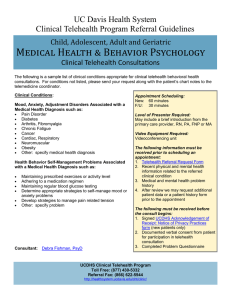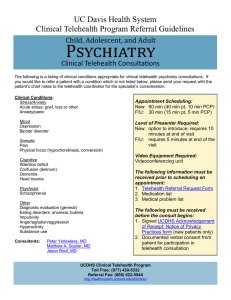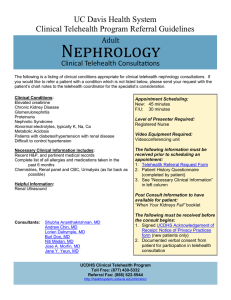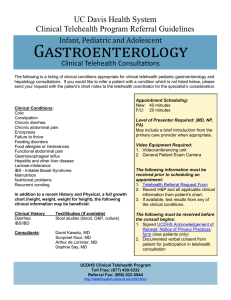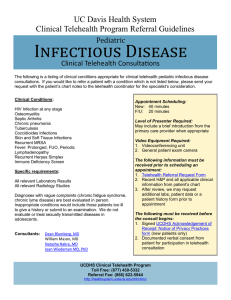Telehealth & Blood Sugar Control in Adolescents: Bibliography
advertisement
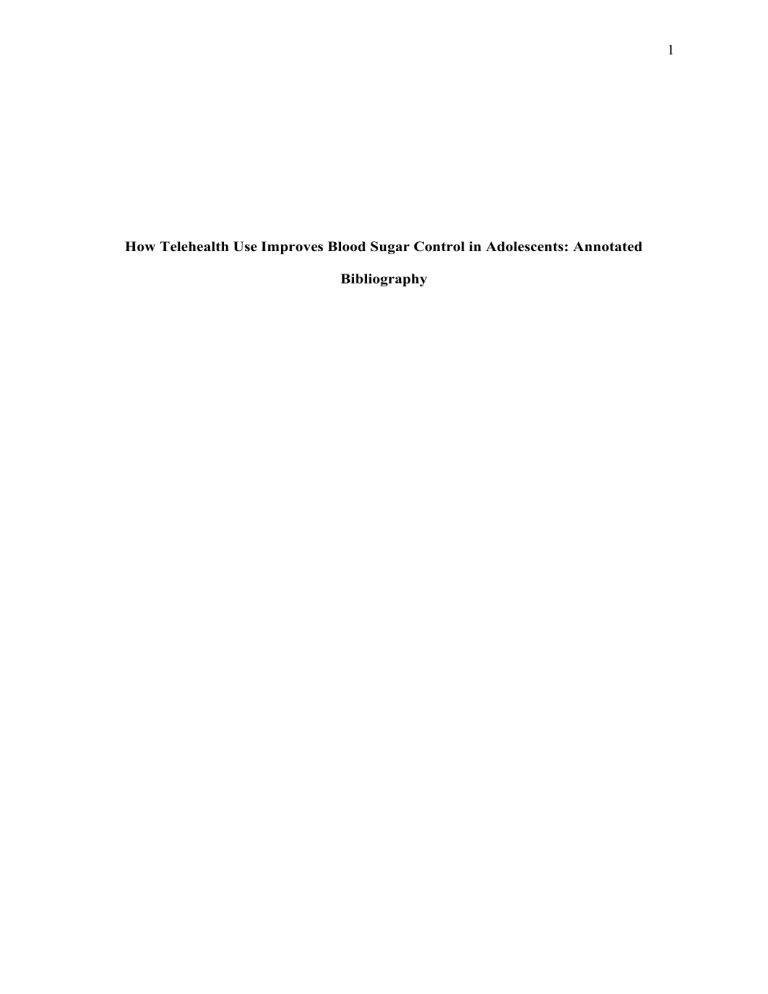
1 How Telehealth Use Improves Blood Sugar Control in Adolescents: Annotated Bibliography 2 PICO Question: In adolescents with type 2 diabetes (P), do telehealth consultations at home (I) improve monthly blood sugar control (O), compared to in-person hospital consultations (C) across monthly visits (T)? How Telehealth Use Improves Blood Sugar Control in Adolescents: Annotated Bibliography Chesser, H., Srinivasan, S., Puckett, C., Gitelman, S. E., & Wong, J. C. (2022). Real-time continuous glucose monitoring in adolescents and young adults with type 2 diabetes can improve quality of life. Journal of Diabetes Science and Technology, https://doi.org/10.1177/19322968221139873 This article by Chesser et al. (2022) acknowledges how type 2 diabetes (T2D) has recently increased at an alarming rate, affecting adolescents. The authors state that compared to adults with T2D, adolescents diagnosed with T2D have rapid disease progression, which leads to increased complications and mortality. Participants in this study who were examined through telehealth applications noted sustained use of telehealth devices and were highly satisfied. In addition, Chesser et al. (2022) noted that telehealth interventions resulted in improved glycemic control for adolescent patients, which also increased visit attendance, thus improving quality of life. This article was significant as it noted how adolescent patients were suited to telehealth visits owing to the accessibility of smartphones that are easily compatible with video platforms. Also, the adolescent patients were easily provided with adequate support and education on how they would easily view, collect, and share data on their progress and get meaningful support from clinicians. 3 Lim, S. T., Yap, F., & Chin, X. (2020). Bridging the Needs of Adolescent Diabetes Care During COVID-19: A Nurse-Led Telehealth Initiative. The Journal of Adolescent Health: Official Publication of the Society for Adolescent Medicine, 67(4), 615–617. https://doi.org/10.1016/j.jadohealth.2020.07.012 With regards to Type 2 Diabetes in adolescents, this study by Lim et al. (2020) was a nurse-led initiative to determine whether type 1 and 2 diabetes mellitus adolescents could benefit from telehealth applications. Fronted as an excellent in-person consultation alternative, the study covered education and advice on the management of diabetes. The participants who were adolescents demonstrated great improvements in ketones and hypoglycemia management and in self-care. Moreover, the utilization of technology resources and assets depicted the telehealth approach's effectiveness, particularly in the supervision of adolescent patients remotely. I found this article useful since the results achieved through the study presented well-crafted telehealth modalities that would eliminate in-person consultations needed in the management of diabetes. In addition, the study compared with other authors' research to ascertain how telehealth applications in the healthcare system can be utilized for self-management and to achieve early complications detection. Schaaf, L., Ley, S., Riegler, A., Poetker, A., Xanthakos, S., Sizemore, J., ... & Shah, A. S. (2023). Development and Implementation of a Multidisciplinary Clinic Focused on the Care of Adolescents with Youth-Onset Type 2 Diabetes. Journal of Multidisciplinary Healthcare, 2799-2807. https://doi.org/10.2147/JMDH.S414849 The study by Schaaf et al. (2023) shows how incorporated telehealth visits allow diabetes providers to ensure patients receive medications and space to address healthcare needs in a timely manner. The authors also argue that the use of telehealth 4 lowers diabetes complications. Furthermore, telehealth visits contribute to reducing in-person visits, thus ensuring glycemic management is well assessed. Also, the creation and implementation of telehealth allows the targeted lifestyle to access comprehensive care at their convenience. Patient satisfaction was noticeably more significant in video telehealth. This research is useful and proves the potential of telehealth as a simple and low-cost alternative to support T2DM patients and enhance their self-care and dietary compliance. Umano, G. R., Di Sessa, A., Guarino, S., Gaudino, G., Marzuillo, P., & Miraglia Del Giudice, E. (2021). Telemedicine in the COVID-19 era: Taking care of children with obesity and diabetes mellitus. World Journal of Diabetes, 12(5), 651–657. https://doi.org/10.4239/wjd.v12.i5.651 The study by Umano et al. (2021) discusses the effectiveness of applying telemedicine approaches to improve healthcare access for children with chronic conditions, specifically obesity and diabetes, during the COVID-19 pandemic. Further, the article stresses on providing evidence of appropriate metabolic weight and control management results in pediatric facilities by applying telemedicine. Although the article focuses on pediatric obesity and diabetes, it also offers valuable insights into the effectiveness of telehealth as a tool for ensuring continuity of quality care. This article is crucial for the research as it points out the need to address security, technical, and privacy issues in telemedicine. Moreover, it also helps to recognize potential obstacles to its widespread implementation while contributing to the existing literature on how telehealth helps in managing diabetes and other chronic diseases not only during the pandemic but also in the future.

